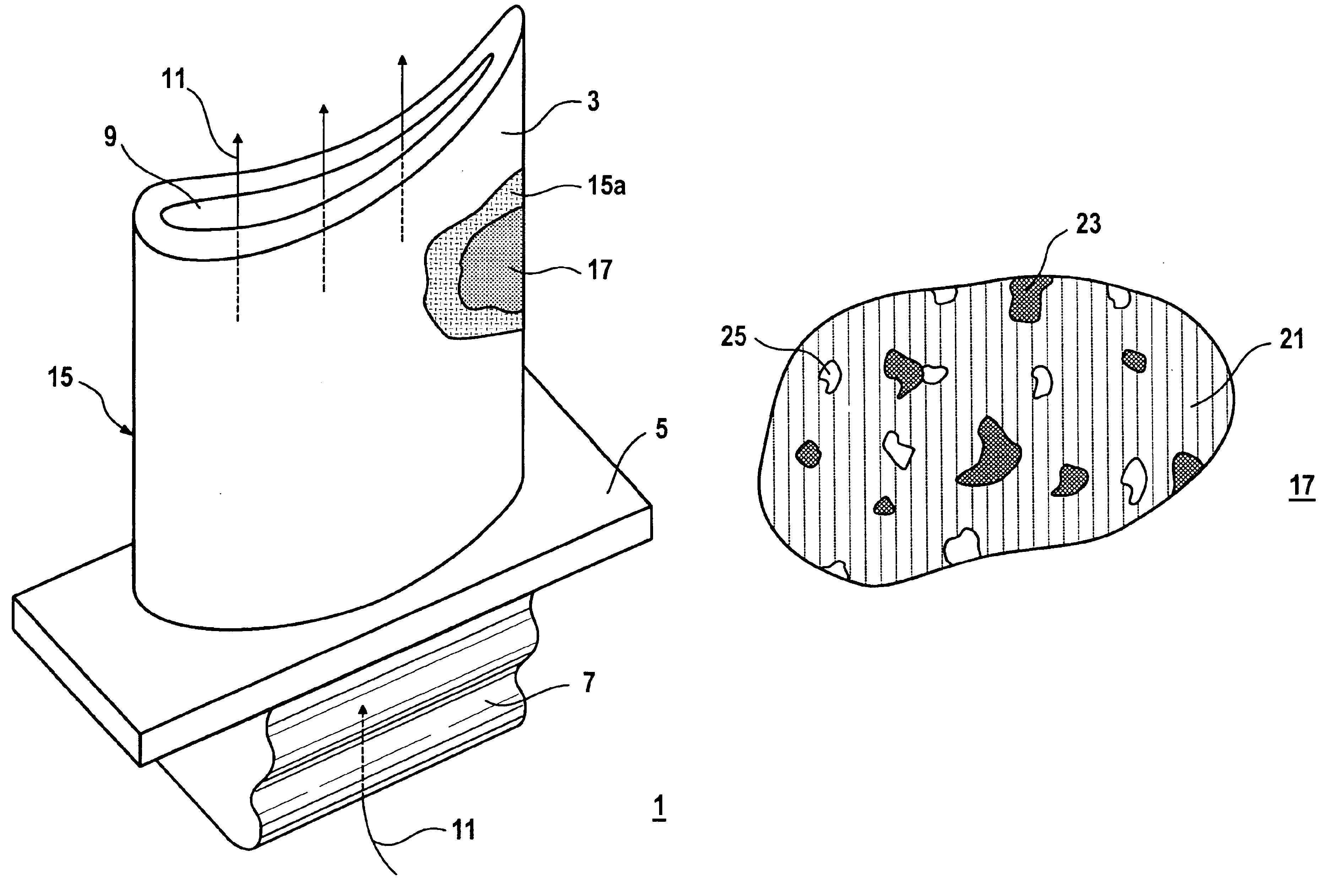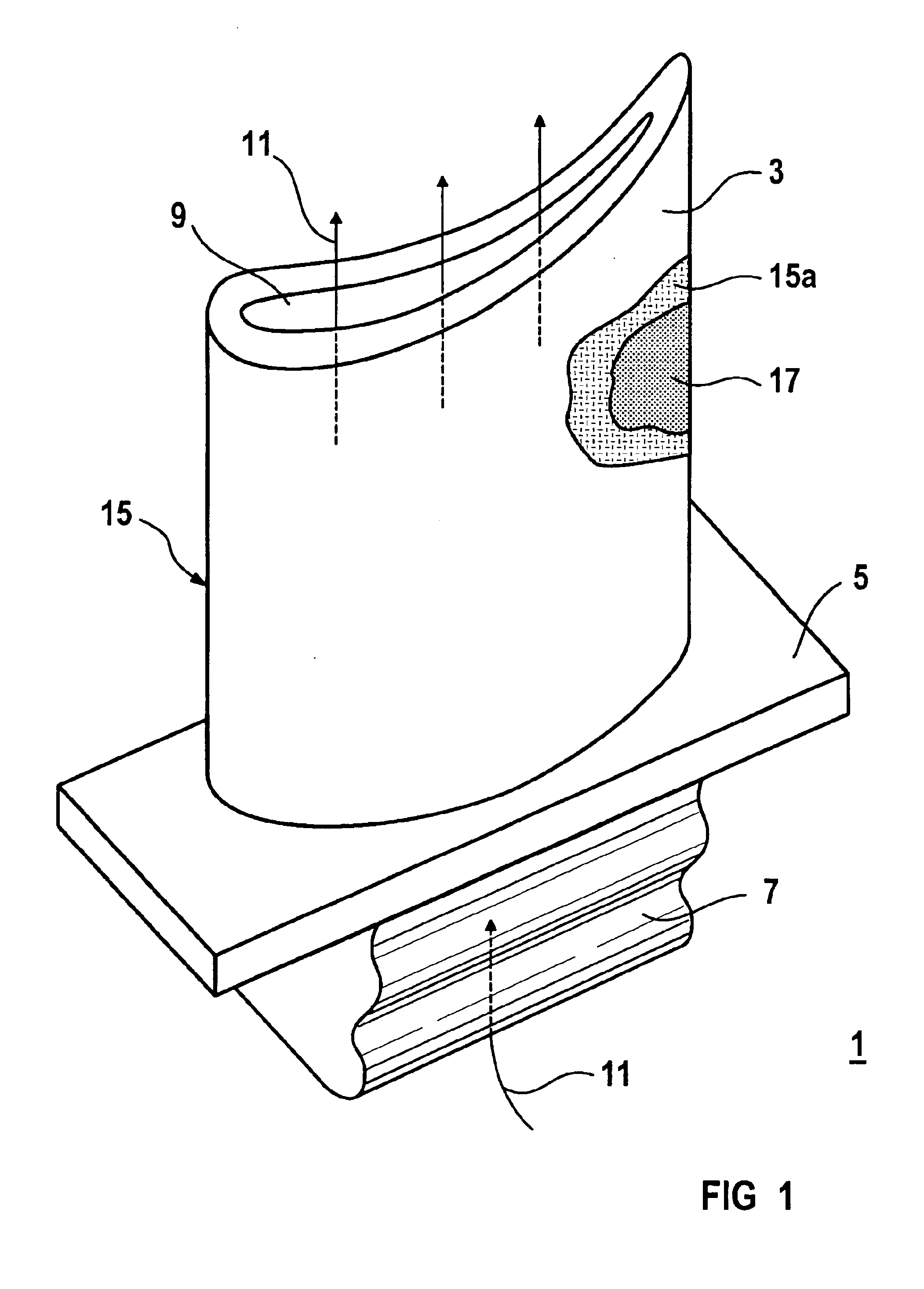Gas turbine blade
a technology of gas turbine blades and blades, applied in the direction of magnetic recording, liquid fuel engine components, record information storage, etc., can solve the problem that magnesium oxide is not suitable for ceramic thermal insulation layers, and achieve the effect of small porosity
- Summary
- Abstract
- Description
- Claims
- Application Information
AI Technical Summary
Benefits of technology
Problems solved by technology
Method used
Image
Examples
Embodiment Construction
[0026]FIG. 1 shows a gas turbine blade 1. The gas turbine blade 1 has a blade 3, a platform 5 and a blade foot 7. The gas turbine blade 1 also has an inner cavity 9 through which cooling air 11 is fed for cooling. The gas turbine blade 1 is made up of a basic body 15 that consists of a nickel or cobalt base superalloy. The basic body 15 also includes an outer metallic corrosion protective layer 15A that provides both corrosion protection and bonds with the ceramic thermal insulation layer. Such a ceramic thermal insulation layer 17 is applied to the corrosion protective layer 15A.
[0027]When using the gas turbine blade 1, a very hot gas flows around blade 3. It is technically necessary to intensively cool the gas turbine blade 1 with cooling air 11. In addition, the ceramic thermal insulation layer 17 must thermally shield the gas turbine blade 1 from the hot gas. The platform 5 is used to shield the hot gas from a rotor disk not shown in greater detail. The blade foot 7 also engages...
PUM
| Property | Measurement | Unit |
|---|---|---|
| diameter | aaaaa | aaaaa |
| diameter | aaaaa | aaaaa |
| porosity | aaaaa | aaaaa |
Abstract
Description
Claims
Application Information
 Login to View More
Login to View More - R&D
- Intellectual Property
- Life Sciences
- Materials
- Tech Scout
- Unparalleled Data Quality
- Higher Quality Content
- 60% Fewer Hallucinations
Browse by: Latest US Patents, China's latest patents, Technical Efficacy Thesaurus, Application Domain, Technology Topic, Popular Technical Reports.
© 2025 PatSnap. All rights reserved.Legal|Privacy policy|Modern Slavery Act Transparency Statement|Sitemap|About US| Contact US: help@patsnap.com



